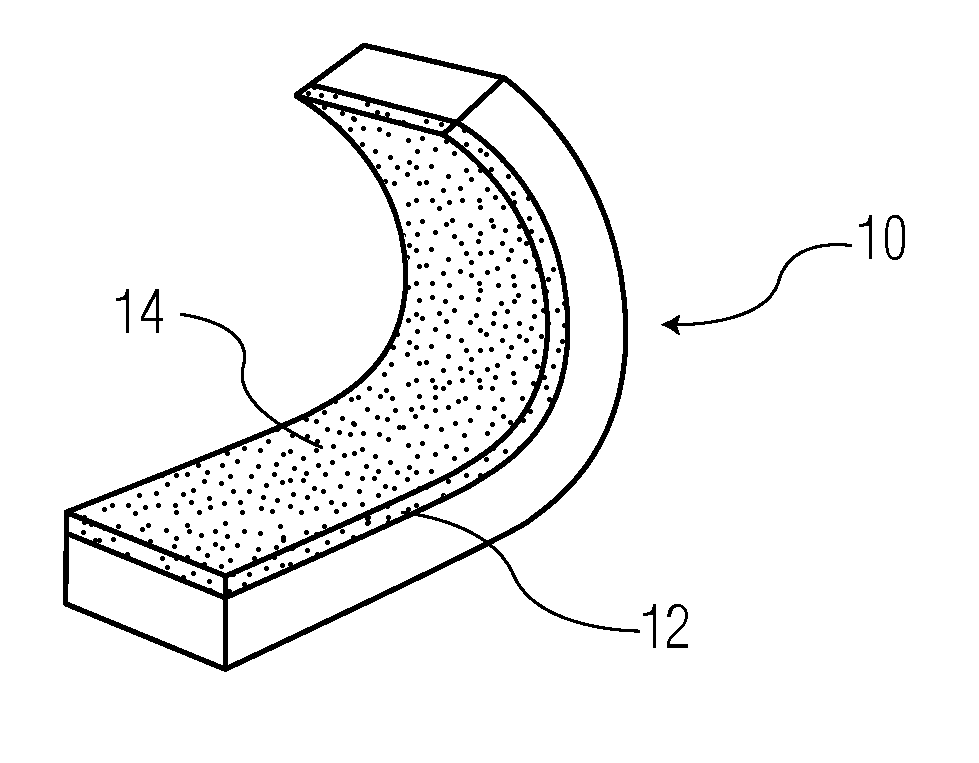Bent Coated Articles
a technology of coated articles and bounded parts, applied in the field of bounded articles, can solve the problems of increased weight, cost, poor environmental resistance, etc., and achieve the effect of improving environmental resistance, reducing the number of bounded parts, and improving the quality of bounded parts
- Summary
- Abstract
- Description
- Claims
- Application Information
AI Technical Summary
Benefits of technology
Problems solved by technology
Method used
Image
Examples
example 1
[0125]The pigment used is about 50 weight percent graphene sheets having a carbon to oxygen molar ratio of about 96 and about 50 weight percent of synthetic graphite (APS graphite supplied by Asbury Carbons, Asbury, N.J.). The sample is printed with a wire rod.
[0126]Prior to the bending test, the film has a surface resistivity of about 23-24 ohms / square. After the bending test the surface resistivity is about 26 ohms / square, which represents about a 6 to 7 percent increase in surface resistivity.
PUM
| Property | Measurement | Unit |
|---|---|---|
| thick | aaaaa | aaaaa |
| temperature | aaaaa | aaaaa |
| temperature | aaaaa | aaaaa |
Abstract
Description
Claims
Application Information
 Login to View More
Login to View More - R&D
- Intellectual Property
- Life Sciences
- Materials
- Tech Scout
- Unparalleled Data Quality
- Higher Quality Content
- 60% Fewer Hallucinations
Browse by: Latest US Patents, China's latest patents, Technical Efficacy Thesaurus, Application Domain, Technology Topic, Popular Technical Reports.
© 2025 PatSnap. All rights reserved.Legal|Privacy policy|Modern Slavery Act Transparency Statement|Sitemap|About US| Contact US: help@patsnap.com



